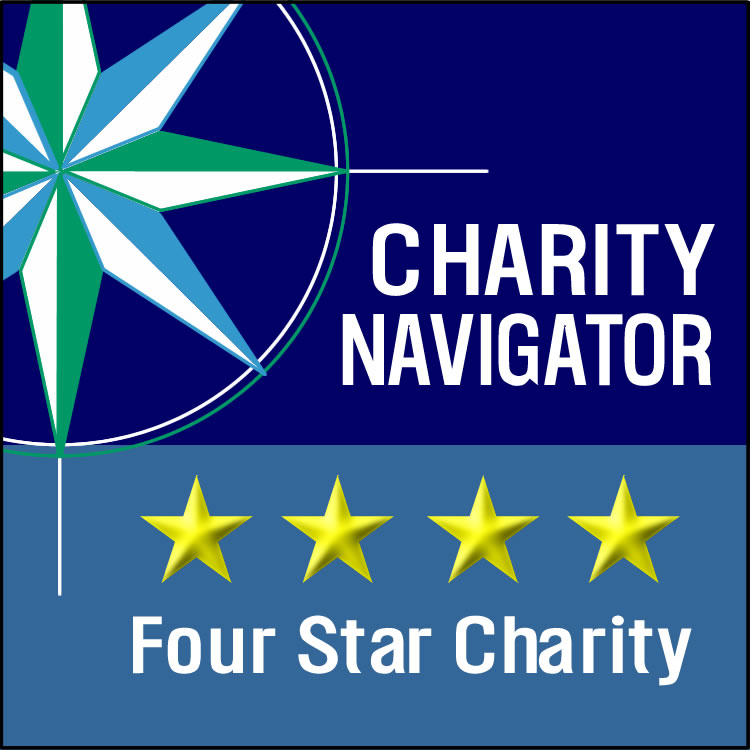The Impact of Visual Impairment on Quality of Life
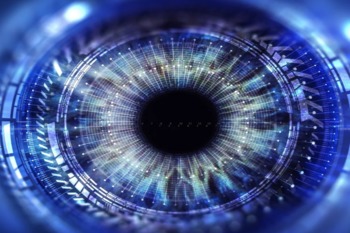 A study (in Iran) analyzed the impact that blindness (80% of study participants) and visual impairment (20%) have on one's quality of life (QOL). Here is a summary of the findings:
A study (in Iran) analyzed the impact that blindness (80% of study participants) and visual impairment (20%) have on one's quality of life (QOL). Here is a summary of the findings:
- Men had a higher QOL than women
- Married people had a higher QOL than single people
- Employed people had a higher QOL than unemployed people
- The higher the level of education, the higher the QOL
- Self care QOL: Most people had "completely desirable" scores
- Leisure QOL: The majority (64%) had undesirable scores
- Mobility QOL: 86% had desirable or higher scores
- Social QOL: Nearly half had undesirable scores
- Emotional QOL: 99% had desirable or higher scores
The Impact of Visual Impairment on Quality of Life
Please donate today to SDCB

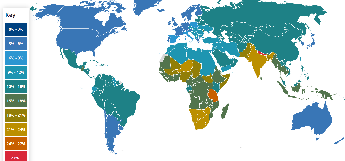 38 million people globally are blind. A further 110 million are visually impaired, with many of those at great risk for becoming blind. Here are the main causes of blindness:
38 million people globally are blind. A further 110 million are visually impaired, with many of those at great risk for becoming blind. Here are the main causes of blindness:
 May, this month, is Healthy Vision Month. So, if you haven't had an eye exam in a while, this would be an excellent time to schedule one.
May, this month, is Healthy Vision Month. So, if you haven't had an eye exam in a while, this would be an excellent time to schedule one.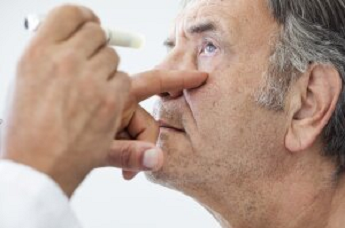 Here are the 5 diseases which most often lead to vision loss or blindness:
Here are the 5 diseases which most often lead to vision loss or blindness: More than half of vision impairment cases can be prevented. Here are seven things you can do to prevent blindness:
More than half of vision impairment cases can be prevented. Here are seven things you can do to prevent blindness:
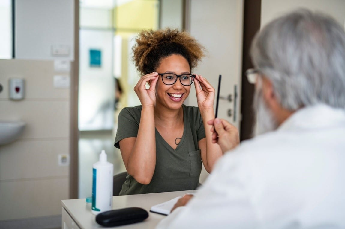 Traditional cataract surgery replaces your cataract with synthetic lenses which are monofocal or bifocal. More recently, trifocal lenses have been introduced. However, there are issues with these lenses, including insufficient light and image quality.
Traditional cataract surgery replaces your cataract with synthetic lenses which are monofocal or bifocal. More recently, trifocal lenses have been introduced. However, there are issues with these lenses, including insufficient light and image quality.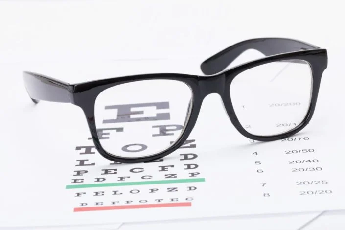 The best thing you can do for the health of your eyes is to get a dilated eye exam. When done early, this exam can detect eye issues and diseases early on, while treatment is easier and more effective, and before you start to lose your vision.
The best thing you can do for the health of your eyes is to get a dilated eye exam. When done early, this exam can detect eye issues and diseases early on, while treatment is easier and more effective, and before you start to lose your vision.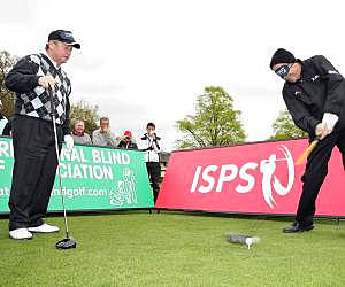 Yes, blind people can play golf. In fact, the rules are almost identical to regular golf. Here are some of the key differences. A blind golfer can:
Yes, blind people can play golf. In fact, the rules are almost identical to regular golf. Here are some of the key differences. A blind golfer can:
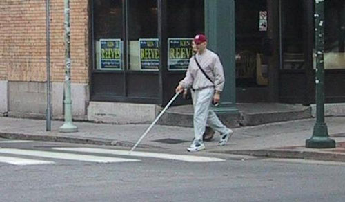 If you are blind or visually impaired, travel can be a challenge. Here are five choices for you:
If you are blind or visually impaired, travel can be a challenge. Here are five choices for you:
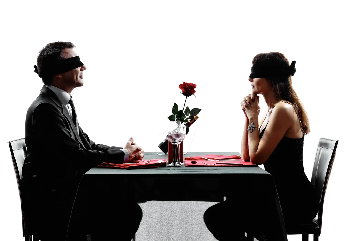 Dining in complete darkness enables you to appreciate your food on a whole new level, relying exclusively on your senses of taste, smell, and feel. Some of these restaurants are staffed entirely with people who are blind or visually impaired. Some let you guess what your food is without seeing it. All provide memorable experiences.
Dining in complete darkness enables you to appreciate your food on a whole new level, relying exclusively on your senses of taste, smell, and feel. Some of these restaurants are staffed entirely with people who are blind or visually impaired. Some let you guess what your food is without seeing it. All provide memorable experiences.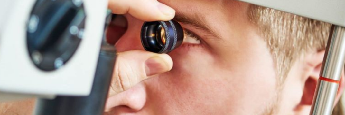 These are the 3 main types of surgery for cataracts:
These are the 3 main types of surgery for cataracts: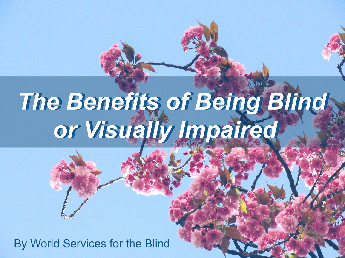 Yes, there are definitely a bunch of good things about being blind or having low vision. Here are the top 10:
Yes, there are definitely a bunch of good things about being blind or having low vision. Here are the top 10:
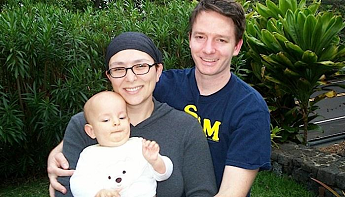 Being a parent is never easy, but doing so with a child who is blind can be especially challenging - and rewarding. Here are five tips to help in raising a blind child:
Being a parent is never easy, but doing so with a child who is blind can be especially challenging - and rewarding. Here are five tips to help in raising a blind child:
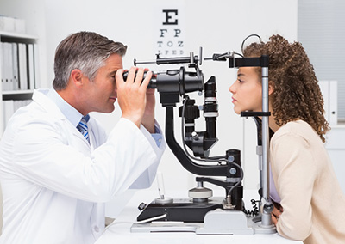 Keep your eyes safe and vision intact with these helpful hints:
Keep your eyes safe and vision intact with these helpful hints:
 If you want some ideas to add to your reading list, here are eight fiction and nonfiction books about blindness which make for great reading:
If you want some ideas to add to your reading list, here are eight fiction and nonfiction books about blindness which make for great reading: Mississippi State University's Navigate Rehabilitation and Transition to Careers offers a number of useful webinars to help those who are blind or visually impaired find meaningful employment.
Mississippi State University's Navigate Rehabilitation and Transition to Careers offers a number of useful webinars to help those who are blind or visually impaired find meaningful employment. Losing one's sight doesn't mean losing the ability to have fun. Here are some recreational options for those with blindness or low vision. Some incorporate large print, Braille or audio.
Losing one's sight doesn't mean losing the ability to have fun. Here are some recreational options for those with blindness or low vision. Some incorporate large print, Braille or audio. Here are some excellent toys for blind children:
Here are some excellent toys for blind children:
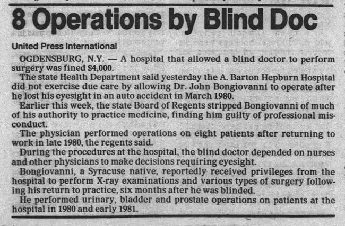 Back in 1980 Dr. John Bongiovanni was in a car accident. Unfortunately, he lost his eyesight. Six months later, he returned to work at A. Barton Hepburn Hospital in Ogdensburg, NY. Even though he was blind, Dr. Bongiovanni did bladder, prostate, and urinary operations on eight patients. During the operations, he was advised by other doctors and nurses on decisions requiring eyesight.
Back in 1980 Dr. John Bongiovanni was in a car accident. Unfortunately, he lost his eyesight. Six months later, he returned to work at A. Barton Hepburn Hospital in Ogdensburg, NY. Even though he was blind, Dr. Bongiovanni did bladder, prostate, and urinary operations on eight patients. During the operations, he was advised by other doctors and nurses on decisions requiring eyesight.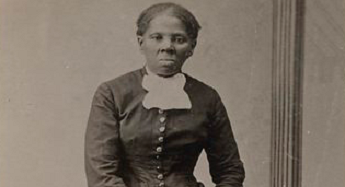 Here are some African-American leaders who happen to be blind or visually impaired:
Here are some African-American leaders who happen to be blind or visually impaired: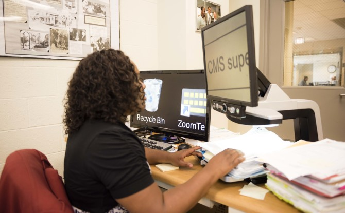 People who are blind or visually impaired can do almost any job, but here are some of the best choices:
People who are blind or visually impaired can do almost any job, but here are some of the best choices:
 Research has shown that when someone loses some or all of their vision, there are seven distinct phases of emotional adjustment that they typically go through:
Research has shown that when someone loses some or all of their vision, there are seven distinct phases of emotional adjustment that they typically go through: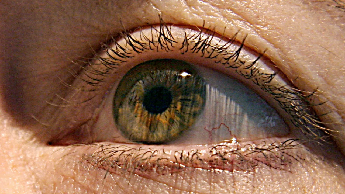 New research shows that your eyes can aide doctors in diagnosing Alzheimer’s disease, even before other symptoms appear. By looking into the optic nerve and retina, doctors can potentially identify Alzheimer's years before they might otherwise, permitting early intervention and treatment that could forestall the onset of serious symptoms involving memory and behavior. It also gives the patient time to opt for healthier lifestyle choices, particularly diet, which can affect the course of the disease.
New research shows that your eyes can aide doctors in diagnosing Alzheimer’s disease, even before other symptoms appear. By looking into the optic nerve and retina, doctors can potentially identify Alzheimer's years before they might otherwise, permitting early intervention and treatment that could forestall the onset of serious symptoms involving memory and behavior. It also gives the patient time to opt for healthier lifestyle choices, particularly diet, which can affect the course of the disease.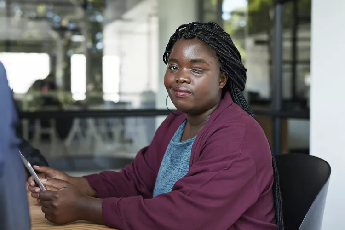 If you have monocular vision -- in only one eye -- perhaps from an injury or illness, here are some of the ways you can cope:
If you have monocular vision -- in only one eye -- perhaps from an injury or illness, here are some of the ways you can cope: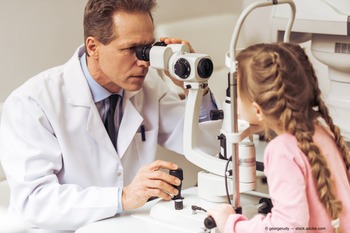 Permanent cortical visual impairment (CVI) causes visual impairment. According to a study in Development Medicine & Child Neurology, children with CVI typically display these behavioral characteristics:
Permanent cortical visual impairment (CVI) causes visual impairment. According to a study in Development Medicine & Child Neurology, children with CVI typically display these behavioral characteristics: Here are the most common vision problems in adults:
Here are the most common vision problems in adults:
 From elementary school through university, here are some of the accommodations schools can -- and in some cases do -- make for students who are blind or visually impaired:
From elementary school through university, here are some of the accommodations schools can -- and in some cases do -- make for students who are blind or visually impaired: Here are some of the conferences in California in the next 12 months which deal with blindness and visual impairment:
Here are some of the conferences in California in the next 12 months which deal with blindness and visual impairment: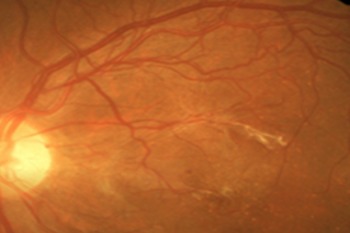 Scientists in at least 7 companies, including 2 in the U.S., have begun implanting retinal prostheses in individuals with eye disorders like retinitis pigmentosa or age-related macular degeneration, but only when the optic nerve and visual cortex are unaffected.
Scientists in at least 7 companies, including 2 in the U.S., have begun implanting retinal prostheses in individuals with eye disorders like retinitis pigmentosa or age-related macular degeneration, but only when the optic nerve and visual cortex are unaffected. If you are blind or visually impaired, here are several options for how to travel by plane or other means:
If you are blind or visually impaired, here are several options for how to travel by plane or other means: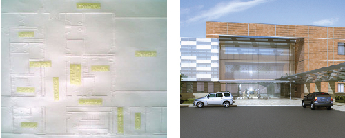 Read profiles of these 7 amazing, inspirational blind people:
Read profiles of these 7 amazing, inspirational blind people:
 Marla Runyan contracted Stargardt's Disease at 9 years old. This type of macular degeneration caused her to become legally blind. Nevertheless, she became a standout track and field athlete, first at San Diego State University in 1987, later in the1992 Summer Paralympics in Barcelona, and then at the 1996 Paralympics in Atlanta where she earned silver in the shot put and gold in the pentathlon.
Marla Runyan contracted Stargardt's Disease at 9 years old. This type of macular degeneration caused her to become legally blind. Nevertheless, she became a standout track and field athlete, first at San Diego State University in 1987, later in the1992 Summer Paralympics in Barcelona, and then at the 1996 Paralympics in Atlanta where she earned silver in the shot put and gold in the pentathlon.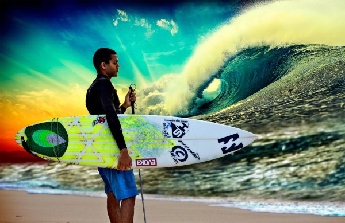 Derek Rabelo was born with congenital glaucoma. Despite that, when Derek was only three he got his first taste of surfing. He became hooked, and now the Brazilian is an avid surfer.
Derek Rabelo was born with congenital glaucoma. Despite that, when Derek was only three he got his first taste of surfing. He became hooked, and now the Brazilian is an avid surfer. John Bramblitt became completely blind at age 30 in 2001. His vision loss stemmed from epilepsy. However, John found an outlet for his pain through, of all things, painting! He actually paints using his sense of touch. He can feel the difference between different colors. Among his artistic accolades is YouTube's "Most Inspirational Video of 2008", as well as three Presidential Service Awards.
John Bramblitt became completely blind at age 30 in 2001. His vision loss stemmed from epilepsy. However, John found an outlet for his pain through, of all things, painting! He actually paints using his sense of touch. He can feel the difference between different colors. Among his artistic accolades is YouTube's "Most Inspirational Video of 2008", as well as three Presidential Service Awards. Mark Anthony Riccobono is blind. At 5 years old he had only 1% of normal vision, and it continued to deteriorate.
Mark Anthony Riccobono is blind. At 5 years old he had only 1% of normal vision, and it continued to deteriorate. Chef Christine Hà got a diagnosis of neuromyelitis optica in 2004. She then began losing her sight, and was legally blind 3 years later.
Chef Christine Hà got a diagnosis of neuromyelitis optica in 2004. She then began losing her sight, and was legally blind 3 years later. Pete Eckert became blind as an adult with retinitis pigmentosa. He didn't let that interfere with his passion for photography, sculpture, and industrial design. After losing his sight he actually expanded his art, shooting ethereal double exposures and vivid light paintings with his Mamiyaflex TLR. camera. Since he was once sighted, h can visualize the image he wants to create in his mind and uses his other senses of sound, touch, and memory to make a photograph. "I am a visual person. I just can't see," he says.
Pete Eckert became blind as an adult with retinitis pigmentosa. He didn't let that interfere with his passion for photography, sculpture, and industrial design. After losing his sight he actually expanded his art, shooting ethereal double exposures and vivid light paintings with his Mamiyaflex TLR. camera. Since he was once sighted, h can visualize the image he wants to create in his mind and uses his other senses of sound, touch, and memory to make a photograph. "I am a visual person. I just can't see," he says.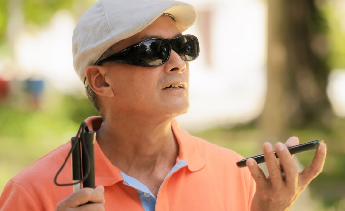 If you own or work for a company (or nonprofit), it's probably important to you to provide excellent customer service to all of your prospects and customers. If you don't have a plan for how to provide great service to blind and visually impaired customers, You should.
If you own or work for a company (or nonprofit), it's probably important to you to provide excellent customer service to all of your prospects and customers. If you don't have a plan for how to provide great service to blind and visually impaired customers, You should.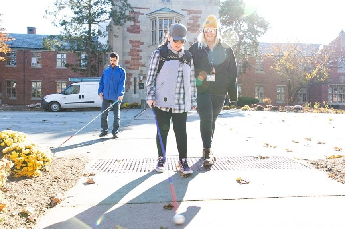 Contrary to popular perception, there is a spectrum of different types of blindness. Some people are completely blind, while others may be able to see some lights, shapes, or nearby objects. The cause of blindness could stem from the eye or the brain.
Contrary to popular perception, there is a spectrum of different types of blindness. Some people are completely blind, while others may be able to see some lights, shapes, or nearby objects. The cause of blindness could stem from the eye or the brain.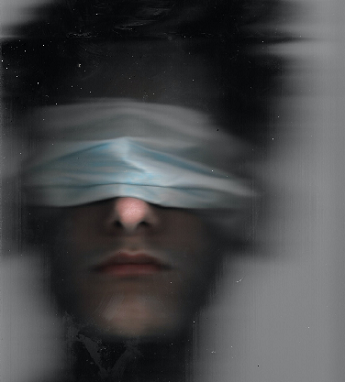 Well-meaning sighted people sometimes will spend time blindfolded, simulating what it's like to be blind, in an effort to better understand blindness. Sometimes these initiatives are personal, other times they are suggested by a teacher, trainer, speaker, etc.
Well-meaning sighted people sometimes will spend time blindfolded, simulating what it's like to be blind, in an effort to better understand blindness. Sometimes these initiatives are personal, other times they are suggested by a teacher, trainer, speaker, etc. The leading cause of blindness throughout the world is cataracts. Cataracts are also the leading cause of vision loss in the United States. Cataracts cause a clouding of the eye's lens, and can occur at any age, including at birth.
The leading cause of blindness throughout the world is cataracts. Cataracts are also the leading cause of vision loss in the United States. Cataracts cause a clouding of the eye's lens, and can occur at any age, including at birth.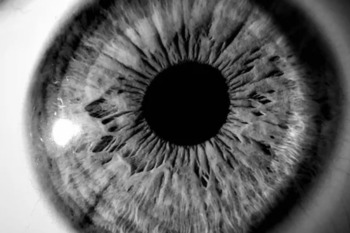 A study published July 3, 2020 and conducted in South Africa and Austria shows that blind people have an IQ 14 points higher than average, and visually impaired people scored 3 points higher. The opposite result was found for verbal comprehension. Several other studies confirm these results.
A study published July 3, 2020 and conducted in South Africa and Austria shows that blind people have an IQ 14 points higher than average, and visually impaired people scored 3 points higher. The opposite result was found for verbal comprehension. Several other studies confirm these results. Anthony Melena graduated from UCLA in 2019, just before the pandemic, flush with the hope of finding the ideal job. The fact that he was blind did not deter him. After all, he had successfully graduated high school, gained admittance to the #1 public university in the country, and graduated from it. Surely the UCLA moniker on his resume would open a lot of doors.
Anthony Melena graduated from UCLA in 2019, just before the pandemic, flush with the hope of finding the ideal job. The fact that he was blind did not deter him. After all, he had successfully graduated high school, gained admittance to the #1 public university in the country, and graduated from it. Surely the UCLA moniker on his resume would open a lot of doors.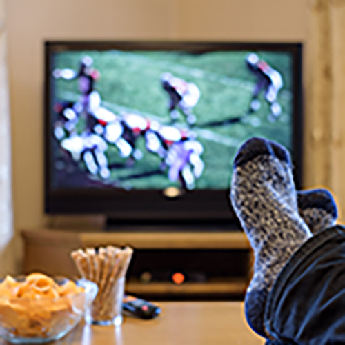 Some 100 million Americans will watch the upcoming Super Bowl 2/12 between the Philadelphia Eagles and the Kansas City Chiefs, taking place in Glendale, AZ.
Some 100 million Americans will watch the upcoming Super Bowl 2/12 between the Philadelphia Eagles and the Kansas City Chiefs, taking place in Glendale, AZ.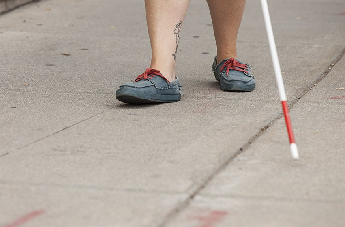 We've all seen people using white canes to get around. But how much do we really know about them. Here are 10 fun facts about white canes:
We've all seen people using white canes to get around. But how much do we really know about them. Here are 10 fun facts about white canes:
